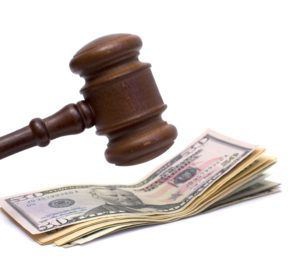In 2008 a zero percent capital gain rate is making its first appearance, but that does not mean all capital gain will be taxed at zero percent. Notice there will be a zero percent rate; which does not mean that the capital gain rate is zero!
What’s the difference? For most sales of capital assets (stocks, bonds, mutual funds, etc.) held long-term there are two capital gain rates that apply. “Long-term” means that the stock or other property must have been held longer than one year before being sold. From May 6, 2003, through December 31, 2007, those rates have been 5% and 15%. And for 2008-2010, the 5% capital gain rate is reduced to 0%.
Why are there two rates? The idea is that long-term capital gain rates are more favorable than ordinary income tax rates-the rates that apply to wages, self-employment income, alimony, and other types of ordinary income. Currently, the ordinary rates range from 10% to 35%. So, if someone is in one of the higher brackets (25%-35%), a 15% rate that is applied to capital gain is certainly a tax benefit., however, if someone is in the 10% or 15% bracket, a 15% capital gain rate would clearly not be very helpful. So, a lower capital gain rate is available to the extent a taxpayer is in one of the lower brackets.
So the 0% rate applies to the extent an individual is in one of the lower brackets. What exactly does “to the extent” mean? Essentially, it means that if all taxable income (ordinary income plus capital gain income) falls within the 10% or 15% tax bracket for an individual’s filing status, any long-term capital gain on the return will be taxed at 0%.
If some of the individual’s taxable income is in the 15% or higher tax bracket, some or all of the long-term capital gain on the return will be taxed at 15%. The amount of long-term capital gain taxed at 15% is computed as follows:
Your taxable income – Endpoint of 15% tax bracket for your filing status = Maximum long-term capital gain subject to 15% tax rate.
Confusing? We agree. For example: Let’s assume Mack, a single taxpayer, has 2008 taxable income of $38,000, including $10,000 of long-term capital gain. For 2008, the 15% tax bracket for a single filer like Mack ends at $32,550. Based on the calculation above, $5,450 ($38,000 – $32,550) of his capital gain will be taxed at 15%, and the remaining $4,550 will be taxed at 0%.
Now assume that Mack’s taxable income is $50,000. In this case, up to $17,450 ($50,000 – $32,500) of long-term capital gain could be taxed at 15%. Thus, all of Mack’s $10,000 long-term capital gain will be taxed at 15%.
Anything else? Here is a great strategy. While lower-income individuals aren’t typical investors, this tax benefit could help out folks such as retirees who have little or no taxable income. And the children of older individuals could combine the annual gift exclusion ($12,000 in 2008) with this capital gains break and give appreciated long-term assets to their older parents. The children could give appreciated assets to the parents or parents could give appreciated assets to the children. Mom and Dad or the children then could sell the assets tax-free.
Don’t worry about that holding-period requirement, either. In the case of a gift, the tax law says the recipient’s holding period is the same as the donor’s. A person could turn around and sell it the next day and get the long-term capital gains rate which would be zero.
Source: www.bankrate.com, www.csmonitor.com, www.forbes.com

